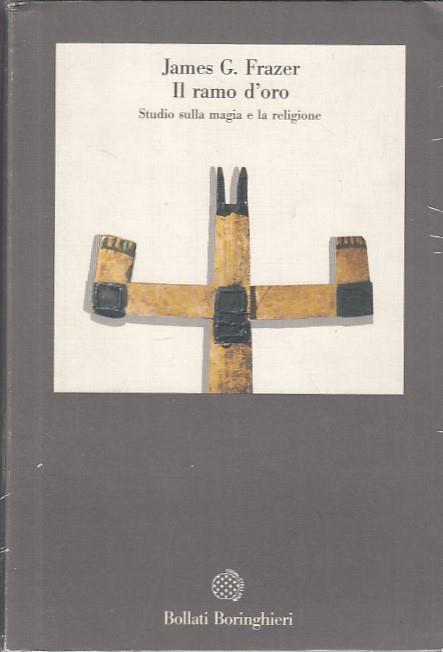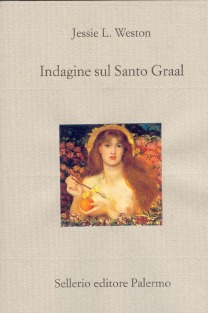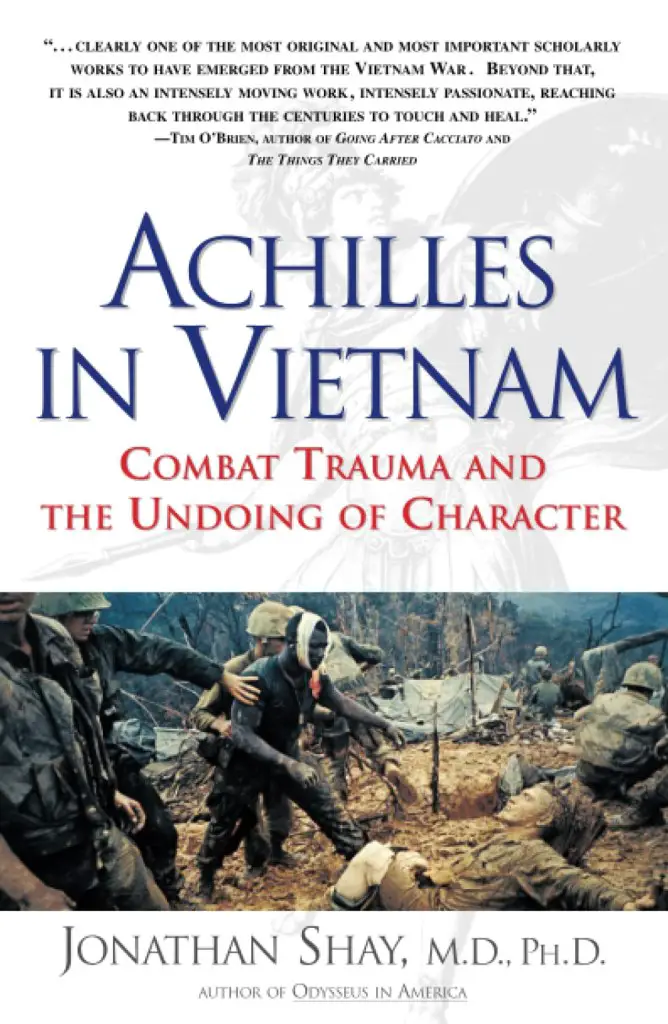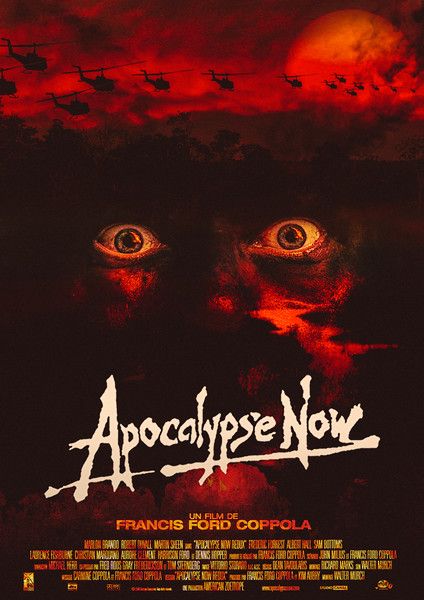Like reading The Golden Bough Sir James Frazer and other anthropological treatises on the rite and the ancestral origins of the social pact inspired Francis Ford Coppola's masterpiece on the war in Vietnam.
di John Bigazzi
As pointed out by all critics, Francis Ford Coppola's masterpiece is inspired by the short story Heart of Darkness by Joseph Conrad ["Heart of Darkness", tr. it.] of 1899, from which the filmmaker draws the antagonist, the ivory dealer Kurtz. The 1979 film, Palme d'Or at the Cannes Film Festival, two Oscars, one for the best photography to Vittorio Storaro and the other for the best sound, is not only a milestone in the history of cinema but also the cultural reference of a generation. Marlon Brando's iconic portrayal of Colonel Kurtz is arguably the best of a male role in film history, for which the actor was paid a whopping $ XNUMX million a week.

But on closer inspection, the literary references throughout the cinematographic work are also other and more important, one of them is The Golden Bough by James G. Frazer [“The Golden Bough”, tr. it.], a work of which, just last June, the centenary of the publication in its abridged edition fell, the one best known to the general public if we can say so. The book appears in an apparently casual way, as if it had just been leafed through, in a shot together with From Ritual to Romance by Jessie L. Weston [“Inquiry into the Holy Grail”, tr. it.] in the Cambodian temple that became the refuge of Colonel Kurtz. Both of these books have been mentioned by TS Eliot as a source of inspiration in the notes of The Waste Land [“The devastated land”, tr. it.] to learn more, see my article "The devastated Earth of TS Eliot and the Way of the Tarot”Always on this blog. But here's the crucial step of the Golden branch on the king of the woods to which Coppola refers for the epilogue of the film:
“In ancient times this woodland landscape was the scene of a strange and recurring tragedy. On the northern shore of the lake, just below the steep cliffs where the modern village of Nemi nestles, stood the sacred wood and the sanctuary of Diana Nemorensis, the Diana of the woods. […] In this sacred wood a tree grew around which, at any time of the day, and probably even late at night, a grim figure could be seen wandering around. In his right hand he held an unsheathed sword and continually looked around as if he feared at any moment he would be attacked by some enemy. This man was a priest and a murderer; and those from whom he looked upon must either sooner or later slaughter him and obtain the priesthood in him instead of him. This was the sanctuary rule. A candidate for the priesthood could take office by killing the priest, and having killed him, he remained in office until he was killed in turn by one stronger and more cunning than himself. "
It seems that the cult of Diana in Nemi sink its origins in the mists of time. A legend has it imported from the Crimea, a region formerly called Chersonese Taurico, after Orestes, having killed the ruler of that kingdom, fled to Italy with his sister, taking with him the simulacrum of the goddess hidden in a bundle of brushwood. It was an arcane cult of a warrior society that involved bloodthirsty rituals.


Captain Willard's voyage along the river from southern Vietnam to Cambodia it is not only an initiatory journey through the horrors of war and the contradictions of the human soul but also a journey backwards through space-time towards the ancestral origins of a primitive humanity and frightened in the heart of an increasingly wild jungle. The road that leads to the Sanctuary of Diana del Bosco of which Kurtz, also called "God", has become the priest-king, the way of the offerings that the kings of Cambodia used to send to the mystical kings of fire and water in the distant and gloomy depths of the forest. Reading the dossier containing information on the human and professional parable of Colonel Walter E. Kurtz is one of the keys to the film's success, the dossier appears in seven scenes. Just as Caligula in imperial times hired a man to kill Nemi's priest because he thought he had held his office for too long, the army assigns Vietnam Special Forces captain Benjamin L. Willard a mission in order to peremptorily end under Kurtz's command, killing him, because his methods had become unhealthy. Own the use of the term unhealthy, ill (unsound in English) is a clear literary reference to Frazer:
“Primitives sometimes believe […] that their salvation and even that of the world is linked to the life of these god-men or human incarnations of divinity. Naturally, therefore, they take the greatest care of their lives out of respect for their own. But neither amount of care nor precautions will prevent the god-man from becoming old and weak and eventually dying. His worshipers must take this sad need into account and deal with it as best they can. The danger is formidable; because if the course of nature depends on the life of the man-god, what catastrophes are not to be expected from the gradual weakening of his powers and the final extinction with death? There is only one way to avert these dangers. The god-man must be killed as soon as symptoms appear that his powers begin to wane; his soul must be passed on to a vigorous successor before it is seriously weakened by the threatened decay. "
So Kurtz is now a very sick man. Not only in the eyes of the host of devoted followers that surrounds him but above all to those of the opulent society that generated him and of which he represented the best fruit that this could express. But now this fruit has spoiled and threatens to corrupt everything else. The riots from post-traumatic stress (PTSD) they are a common thread throughout the film, from Willard's hotel room in Saigon, to the crew on the boat, and finally to Kurtz. In the book Achilles in Vietnam: Combat Trauma and the Undoing of Character by Jonathan Shay PSTD disorders present in Vietnam veterans are studied and compared with Homer's Iliad. In situations of high stress, a sort of short-circuit occurs in the synapses of decision-making processes, a transfiguration of the individual takes place at a pre-rational level and the behavior becomes instinctive, bestial, almost mechanically guided by the mechanisms of the oldest part of our brain. The reptilian brain is what pertains to survival.
THU Coppola does not distinguish between advanced and primitive society, from the anthropological point of view the director is perfectly aligned with Frazer's vision and the epilogue must necessarily be the same. When the Italian-American director was asked how much he had been influenced by Frazer's work in making Apocalypse Now he replied, “I knew The Golden Branch since I was a student and from time to time I read parts of it. When the time came to shoot the film I saw some analogies, so I reread it much more thoroughly ”. Even the choice of Cambodia it is mediated by Frazer and not by Conrad, whose story is set in the heart of Africa. The reference here is al king of fire and king of water: “The mystical kings of fire and water in Cambodia are not allowed to die a natural death. So when one of them is seriously ill and the older ones judge that he cannot be recovered, they mortally wound him ". And in fact fire and water are the physical elements with which the whole film is built from the first to the last frame.


Where Frazer leaves us, Weston takes us by the hand and when Willard emerges from the scene of the regicide he is welcomed by the Montagnards not, as one might expect, with screams of fury but with adoration: now he is the chosen one, the new priest of the sanctuary of Diana, the one on whom the prosperity of the kingdom depends, central concept of the medieval tradition of the Grail:
“The idea of a people whose prosperity, together with the fertility of their land, is closely linked to the life and virility of their King, who is not an ordinary man, but a divine reincarnation. If he falls into languor, like the Fisher King of Perlesvaus, the land and the inhabitants will equally suffer. "
To finish with the literary references, here is the scene of Kurtz's reading aloud of the poem The hollow men [“The hollow men”, tr. it.] written by TS Eliot in 1925, after a period of rest from work due to a nervous breakdown, a poem that contains many elements of Devastated land. In a circular way, the opening of the poem is a phrase taken from Heart of Darkness: "Mistah Kurtz-he dead". At this point it is fair to ask whether Kurtz is not really the symptom rather than the cause of a now decadent Western society:
“But we have to kill them, we have to incinerate them, pig after pig, cow after cow, village after village, army after army. And they say I'm a killer. And what do you say when killers accuse other killers? They lie! They lie and we have to be lenient with those who lie ?! Those nabobs ... I hate them! I hate them deeply! "

The epilogue revolves around the concept of freedom, so Kurtz will be asking Willard in their meeting: “Have you ever considered real freedoms? Freedom from the opinions of others, even from one's own opinions? […] You are a shop boy who was sent by the grocer to collect the suspended items ”. What is the nature of this freedom if it can only be exercised according to someone else's prescriptions? In reality, the bourgeois is never free, the freedoms he can enjoy are established a priori and aimed at the functioning of the social machine.
